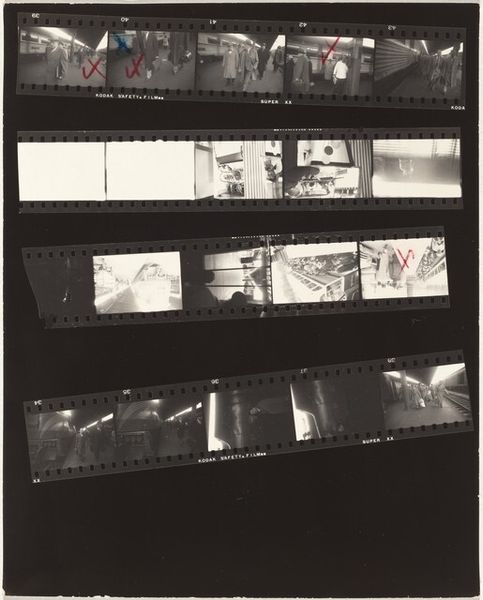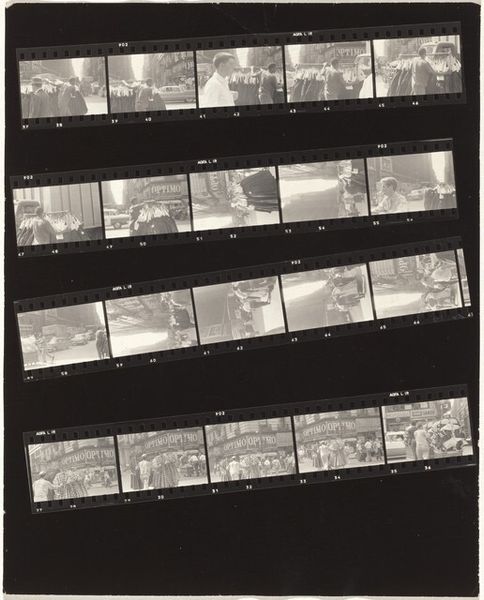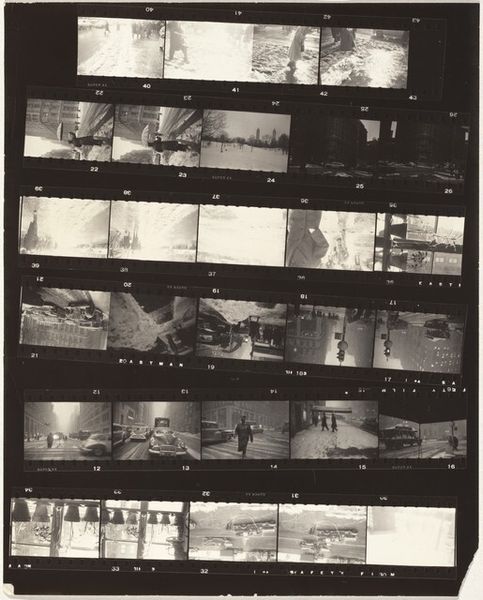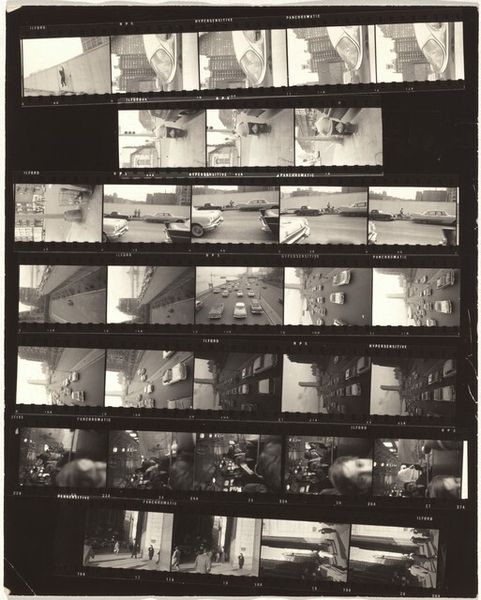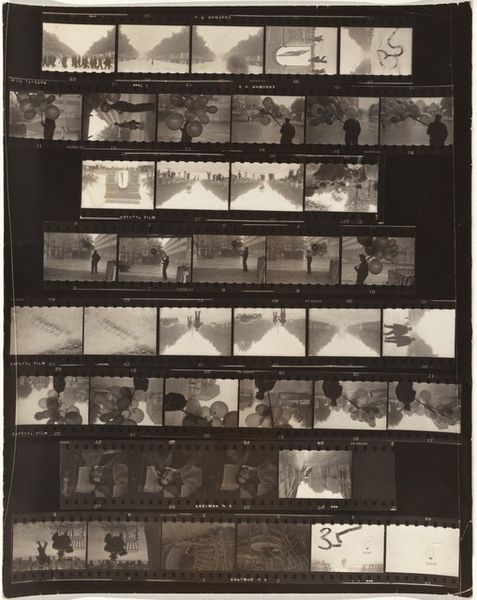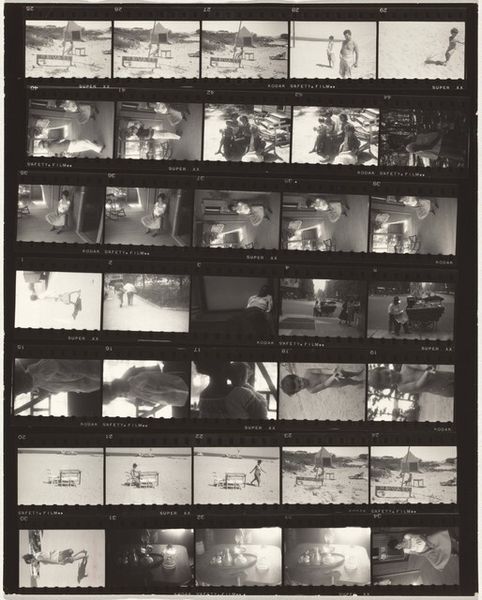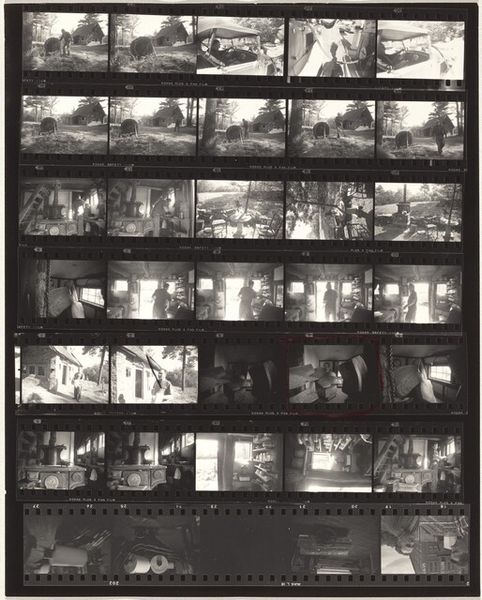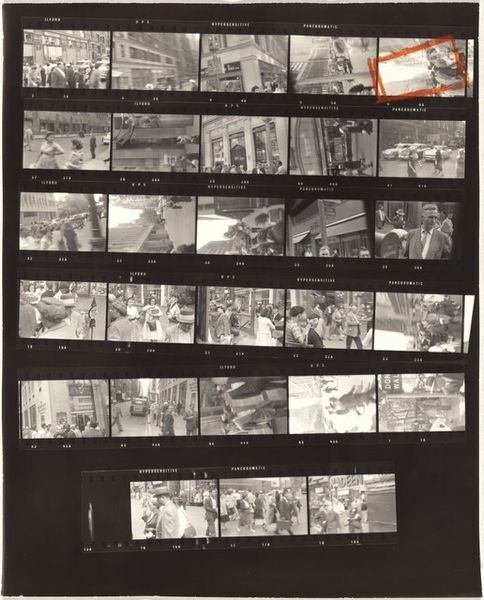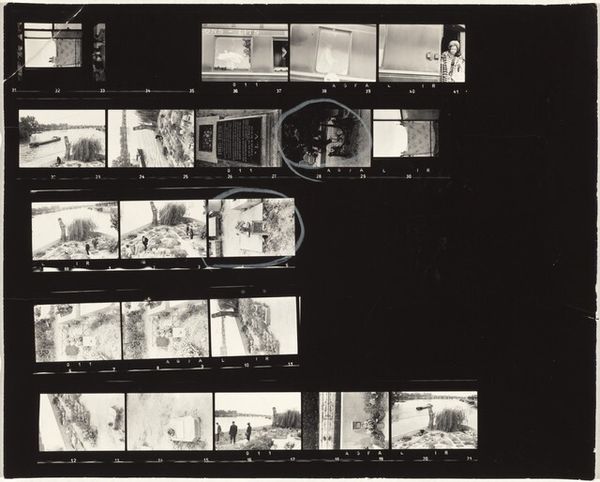
photography, gelatin-silver-print
#
portrait
#
street-photography
#
photography
#
historical photography
#
gelatin-silver-print
#
cityscape
#
realism
Dimensions: sheet: 25.3 x 20.2 cm (9 15/16 x 7 15/16 in.)
Copyright: National Gallery of Art: CC0 1.0
Curator: Robert Frank's “23rd Street--New York City B,” likely created between 1959 and 1960, offers us an interesting array of views captured in gelatin silver. What’s your immediate impression, Editor? Editor: It feels like looking at a disassembled memory, a collection of fleeting moments that someone is trying to reconstruct. Grainy, a little sad, definitely evocative of a past I never knew, like wandering through a really intriguing flea market of images. Curator: Structurally, the photograph consists of multiple strips of film, not individually cropped, but existing as complete thought progressions and frames. There's a layering effect, almost a contact sheet presentation that suggests unedited reality. The stark tonality—the high contrast—amplifies the immediacy and rawness often found in street photography of that era. Editor: It's like he’s saying, "Here, take these pieces. Feel them. What do they tell *you*?" I see glimpses of the city—cars, people, maybe a river? There’s something about the sequencing, too. Does it tell a story, or is it just the vibe, the feel of the city that he’s after? Curator: I’m drawn to the almost obsessive focus. Repeated images, a bridge seen from within a vehicle, the suggestion of movement, and human figures interplaying to draw our focus between city planning and the candid pedestrian interaction with an urban grid that's been semiotically disrupted, then recorded again through the artistic agency and subjective choices of Frank himself. Editor: There's a lack of sentimentality too, wouldn’t you say? Despite being almost nostalgic-seeming, there’s a distance. Like, he’s present, observing, but not really *in* it. The composition emphasizes process and transience, almost rejecting glamour and the idealized versions of cityscape photography in general. It's fascinating. Curator: Exactly. In conclusion, Frank’s assemblage evokes an urban landscape marked by fragmentation, and constant evolution. It’s less a postcard and more a visual poem with an evolving meaning depending on the spectator. Editor: Yeah, like each filmstrip has its own rhythm, its own beat, but together they make up a symphony of urban life. Really gives you a lot to ponder.
Comments
No comments
Be the first to comment and join the conversation on the ultimate creative platform.
